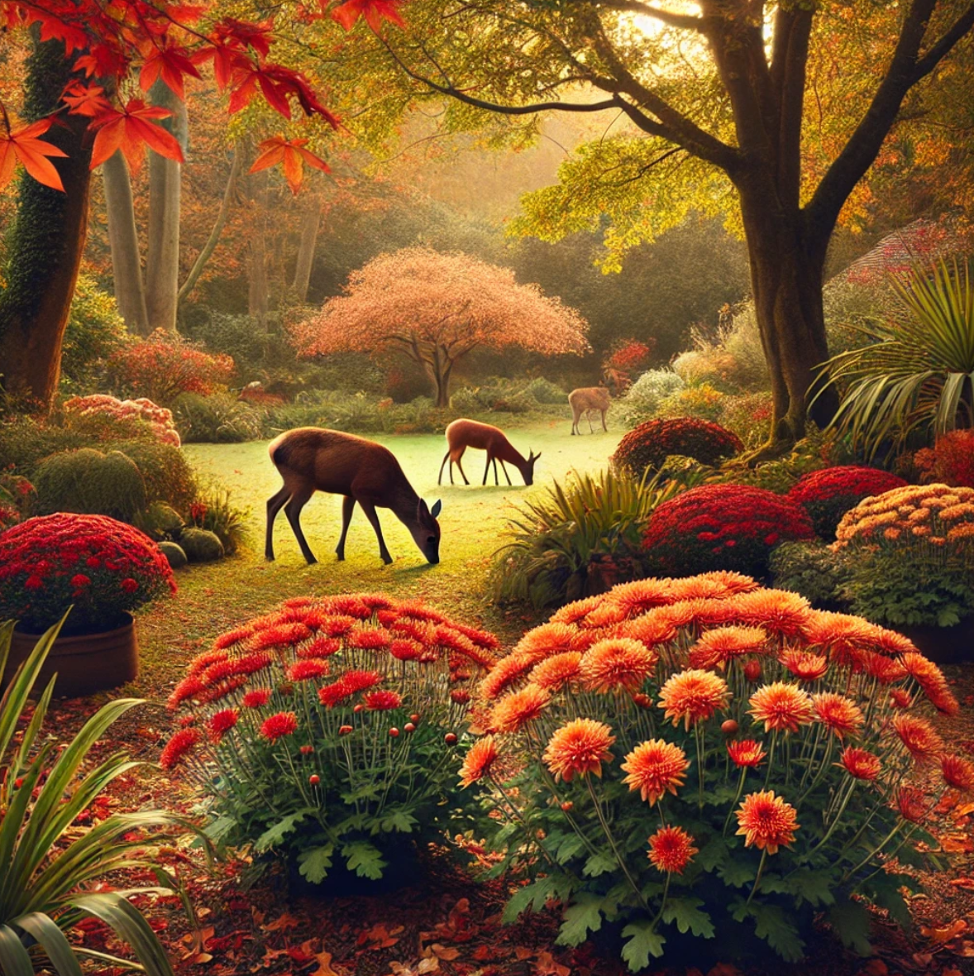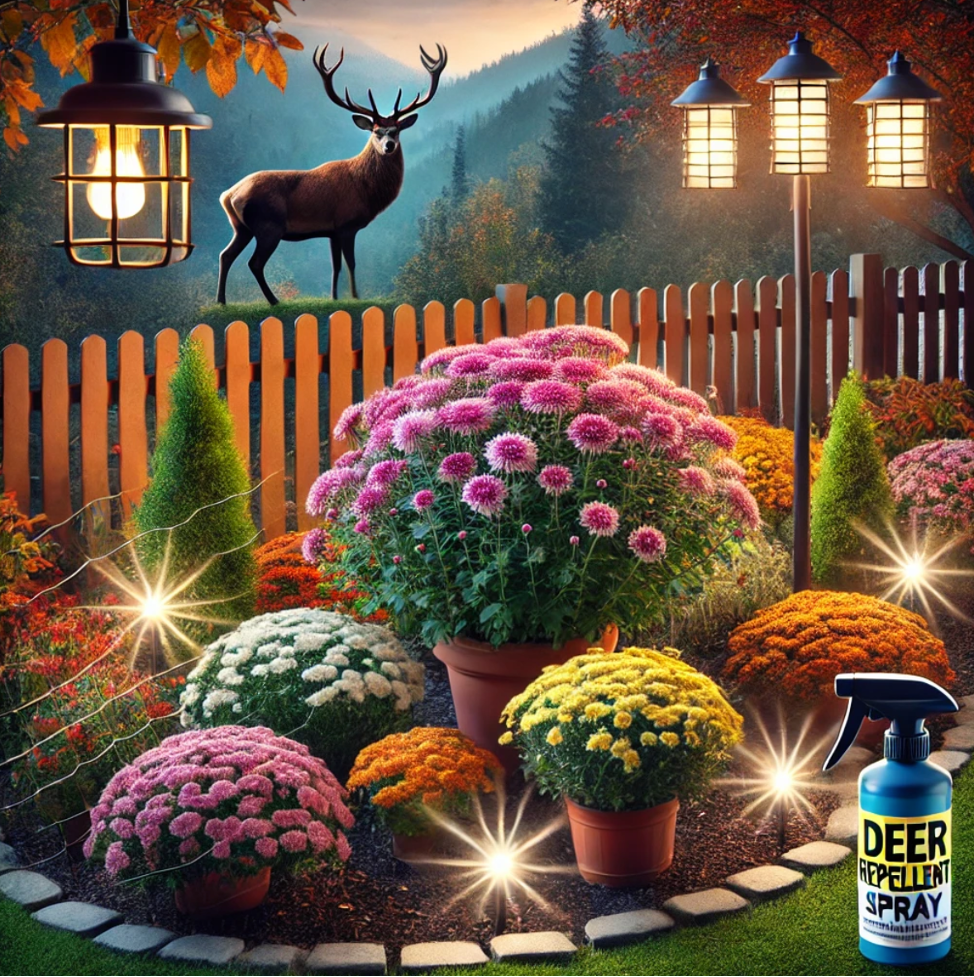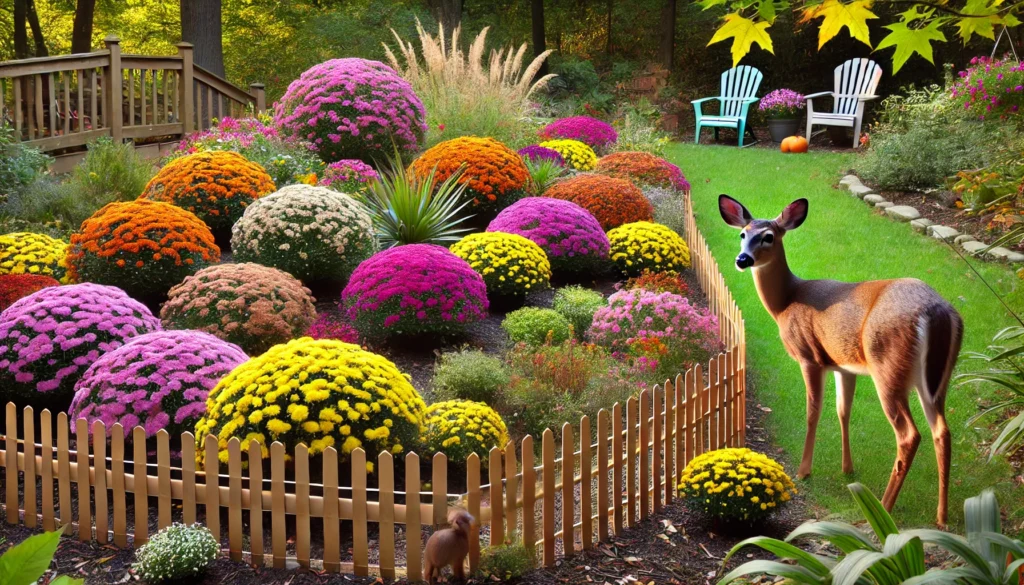Mums, also known as chrysanthemums, are one of the most popular fall-blooming flowers. With their vibrant colors and ability to thrive in cooler temperatures, they bring a bright, festive touch to gardens as summer fades into fall. But for gardeners living in areas with high deer populations, the question often arises: Are mums deer-resistant?
The short answer is that while mums are not a preferred food source for deer, they are not entirely deer-proof. Understanding the level of deer resistance mums offer, why deer might still nibble on them, and how you can protect your mums from deer damage will help you maintain a beautiful garden throughout the fall season.
Why Do Deer Avoid Some Plants?

Before delving into whether mums are deer-resistant, it’s essential to understand why deer prefer some plants over others. Deer are known to be opportunistic feeders, meaning they will eat what is available, especially as natural food sources diminish in the fall and winter. However, deer tend to avoid plants with certain characteristics, such as:
- Strong scents: Plants with pungent aromas, like lavender or herbs like rosemary and sage, are less attractive to deer.
- Tough or fuzzy textures: Deer prefer tender, easy-to-chew foliage. Plants with thick, leathery, or fuzzy leaves are often bypassed.
- Toxicity: Some plants contain chemicals that are toxic to deer or taste bitter, making them unappealing.
Mums don’t possess all of these characteristics, but they do have some attributes that make them less desirable to deer.
Are Mums Deer-Resistant?
Chrysanthemums are generally considered moderately deer-resistant. This means that while they are not a favorite snack for deer, they are not completely immune to being eaten. Here’s why:
- Aromatic Properties: Mums have a mild fragrance, which can help deter deer, but it’s not strong enough to provide complete protection. Some varieties may be more aromatic than others, and this can affect their level of resistance.
- Fuzzy Texture: The leaves of chrysanthemums have a slightly fuzzy texture, which deer often dislike. However, during times of food scarcity, deer may overlook this feature.
- Unpleasant Taste: Mums have a slightly bitter taste, especially in the leaves, which makes them less palatable to deer. Again, this is not a foolproof deterrent, especially if deer are particularly hungry.
Why Do Deer Sometimes Eat Mums?

Even though mums are considered deer-resistant, they are not deer-proof. Deer behavior can vary greatly depending on the region, weather conditions, and food availability. Here are a few reasons why deer might nibble on your mums:
- Food Scarcity: During the fall, natural food sources for deer begin to dwindle. As a result, deer may become less selective about what they eat. If other food options are scarce, deer may eat mums despite their less favorable characteristics.
- Young, Tender Growth: Deer tend to go after plants that have fresh, tender growth. If your mums are in their early stages of growth or if new shoots have appeared, deer may be more inclined to sample them.
- Desperate Times: In regions where deer populations are high and food sources are limited, deer will eat plants they would normally avoid. Mums, being a relatively soft plant compared to woody shrubs, may fall victim to desperate deer.
How to Protect Mums from Deer

If you live in an area with a high deer population and want to ensure your mums remain intact throughout the fall, there are several strategies you can implement to protect your garden from deer damage.
1. Use Deer Repellents
Deer repellents are a common and effective way to keep deer away from your mums. These products work by emitting strong odors or unpleasant tastes that deter deer. There are two types of repellents:
- Scent-based repellents: These products release smells that mimic the presence of predators or unpleasant odors like garlic, rotten eggs, or blood meal.
- Taste-based repellents: These are sprayed directly on plants, making them taste bitter or spicy, which discourages deer from feeding on them.
Tip: Reapply repellents after rain or heavy dew to maintain their effectiveness.
2. Install Fencing or Netting
Physical barriers such as fences or netting are one of the most reliable methods for keeping deer out of your garden. However, deer are capable jumpers, so fences should be at least 8 feet high to be effective. If a tall fence isn’t feasible, consider using:
- Temporary netting: Place netting over or around your mums to protect them during peak deer activity.
- Deer deterrent fences: Electrified fences or double-layered fencing can prevent deer from entering your garden.
3. Plant Deer-Resistant Varieties
While no mum variety is completely deer-proof, some varieties may be less attractive to deer due to their scent or texture. When selecting mums, ask your local garden center if they carry varieties known to be more deer-resistant.
4. Companion Planting
Deer are less likely to approach plants that are surrounded by strong-smelling or unpalatable plants. You can try planting deer-resistant flowers and herbs such as lavender, rosemary, or marigolds around your mums to create a natural barrier.
5. Motion-Activated Devices
Deer are skittish creatures, and sudden movement or noise can startle them away. Installing motion-activated sprinklers, lights, or noisemakers near your mums can help deter deer from venturing too close.
Additional Deer-Resistant Plants for Fall Gardens
In addition to mums, there are several other fall-blooming plants that deer tend to avoid. Consider incorporating these into your garden to add color and reduce the likelihood of deer damage:
- Asters: With their vibrant shades of purple, blue, and pink, asters are a hardy, deer-resistant option for fall gardens.
- Sedum: This succulent-like plant with star-shaped flowers is both drought-tolerant and deer-resistant.
- Russian Sage: Its silvery leaves and lavender-blue flowers add texture and fragrance to the garden, repelling deer in the process.
- Coneflowers (Echinacea): These popular perennials with their distinctive cone-shaped centers are typically left alone by deer.
Conclusion
While mums are not a guaranteed deer-proof plant, they do offer a level of resistance that makes them a better choice than many other fall flowers. By understanding why deer may target your mums and taking steps to protect them, you can enjoy a vibrant, deer-free garden throughout the fall season. Whether you use deer repellents, install physical barriers, or opt for companion planting, there are numerous ways to safeguard your mums and keep your garden looking beautiful well into autumn.

